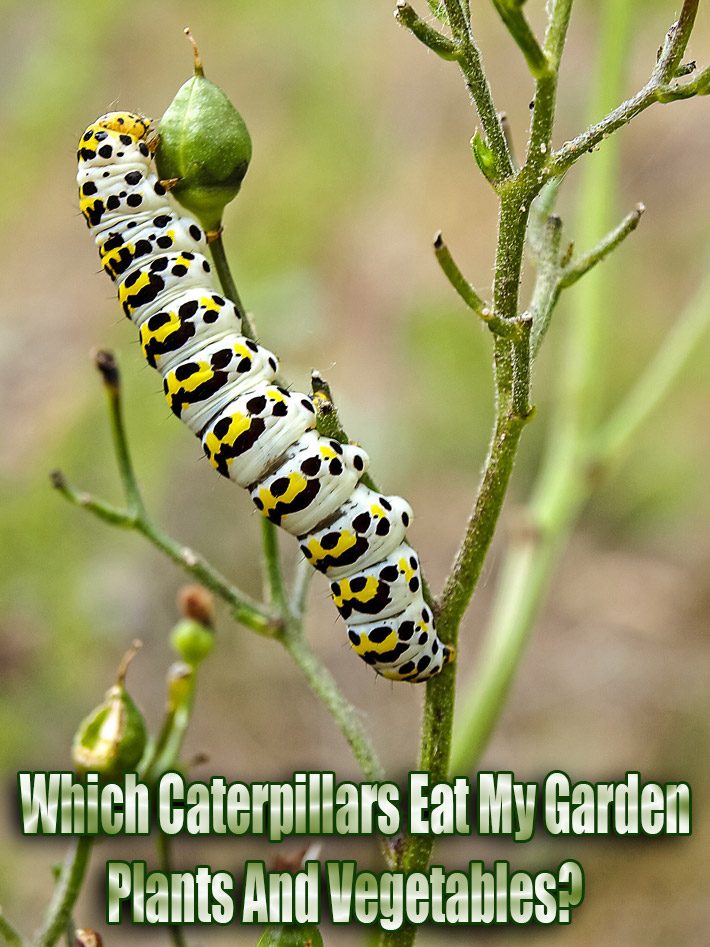
Caterpillars are a natural part of the ecosystem and can be quite beautiful before and after their metamorphosis, but that doesn’t mean you have to be happy with letting them munch on all your garden plants and vegetables. This guide will help you identify six of the most common garden caterpillars you’ll encounter and the damage they can cause.
Many charming butterflies and moths spend their youth as plant-munching caterpillars. Get to know them as larvae and adults, and learn what damage they do.
IMPORTED CABBAGEWORM
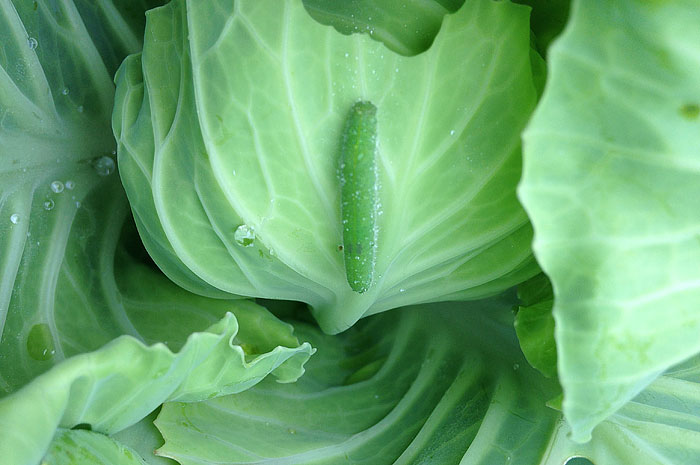
- Alter Egos:
Cabbage white, Pieris rapae. - Known Hangouts:
Broccoli, kale, brussels sprouts, and other members of the cabbage family. They pupate in winter on decaying garden plants and weeds. - Key To ID:
Cabbage whites are among the first butterflies you see each spring, and the last ones to still be active in fall. The males have one spot on each wing; females have two. - Damage:
The cabbageworms chew holes in the deep recesses of leafy crops.
PARSLEYWORM
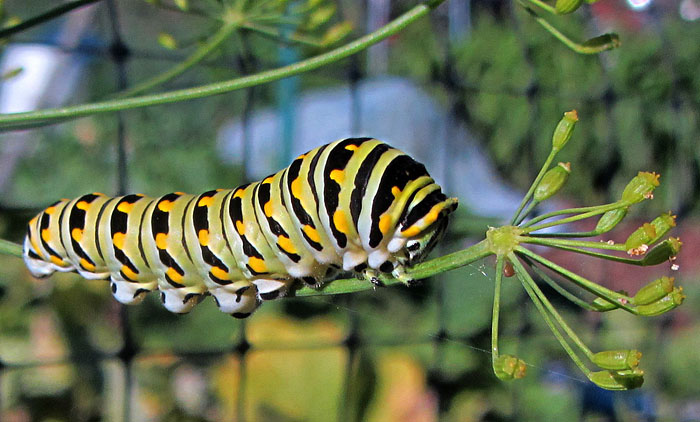
- Alter Egos:
Black swallowtail, Papilio polyxenes. - Known Hangouts:
Parsley, carrots, dill, and fennel. - Key To ID:
The parsleyworm’s alternating bands of green and black with yellow spots make the worm appear almost as striking as the black butterflies’ bright yellow or blue spots. - Damage:
While you may admire the parsleyworms’ beautiful markings, they swiftly reduce leafy stalks of parsley and fennel to bare twigs.
GYPSY MOTH CATERPILLAR
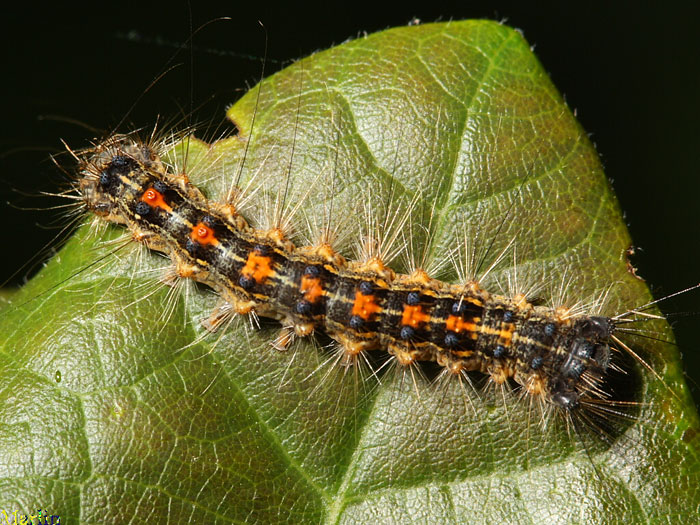
- Alter Egos:
Gypsy moth, Lymantria dispar. - Known Hangouts:
Many common landscape trees, including apple, birch, oak, and cherry. - Key To ID:
Each caterpillar has five pairs of blue spots followed by six pairs of red spots along its back. The male moths are brown and able to fly, while the females are white or off-white and do not fly. - Damage:
A heavy infestation of gypsy moth caterpillars can defoliate and kill even a large oak tree.
TOMATO HORNWORM
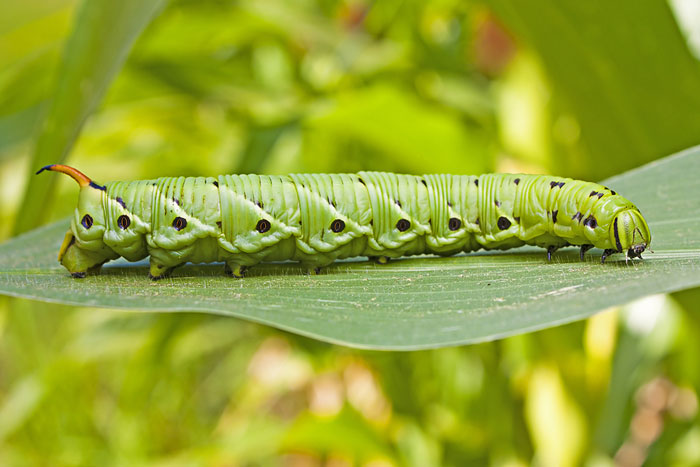
- Alter Egos:
Five-spotted hawkmoth, Manduca quinquemaculata. - Known Hangouts:
Tomatoes and all their kin, including peppers, eggplant, and potatoes. - Key To ID:
The caterpillar has a dark “horn” at its tail end. Five-spotted hawkmoths are one of the few that are active during the day, feeding on the nectar of flowers such as phlox and petunias. - Damage:
With the camouflage of their green color, hornworms hide under leaves and on stems, chewing them up and even biting into unripe fruit.
CORN EARWORM
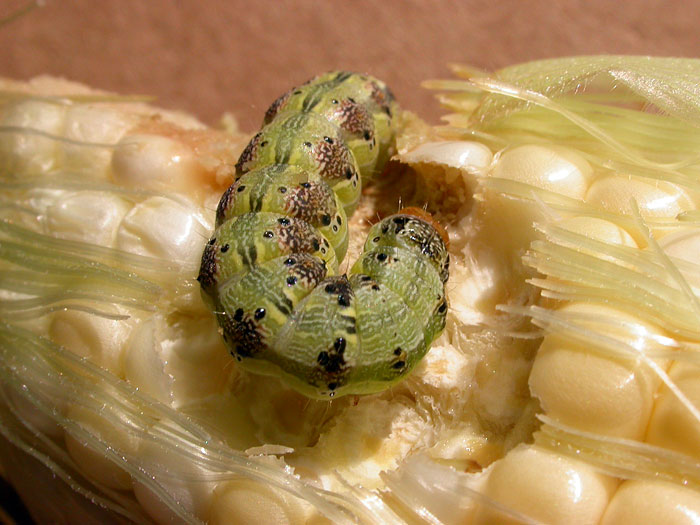
- Alter Egos:
Tomato fruitworm, bollworm, Helicoverpa zea. - Known Hangouts:
Many farm and garden crops, including corn, tomatoes, and cotton. - Key To ID:
The caterpillars’ colors vary as they mature, with bodies that can be brown, green, pink, or yellow. Spines on its back and a light-colored head distinguish it from the similar-looking fall armyworm. - Damage:
Corn earworms don’t feed on just one ear of corn or tomato, but take a few bites and then move on to another.
TENT CATERPILLAR
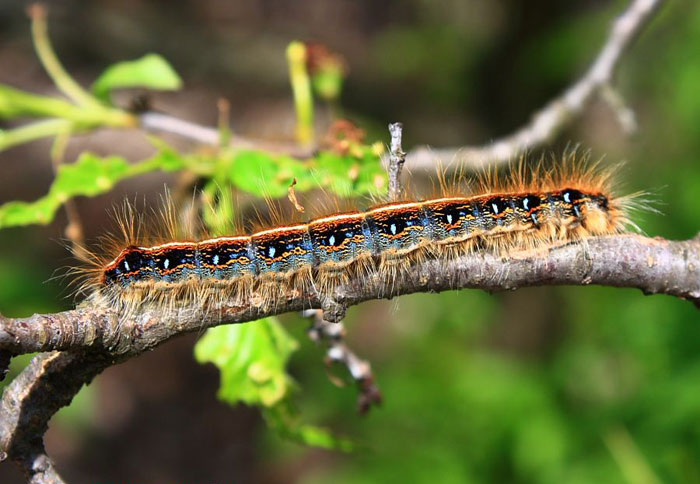
- Alter Egos:
Malacosoma spp. - Known Hangouts:
Apple, cherry, and other fruit trees, and woody plants of all kinds. - Key To ID:
Clusters of the caterpillars live inside whitish, silky tents they construct between tree branches. The tents can be up to 2 feet long. - Damage:
The multiple caterpillars that emerge from a single tent can consume 20 percent of a small tree’s leaves, weakening the tree and leaving it vulnerable to stresses of all kinds.





Leave a Reply